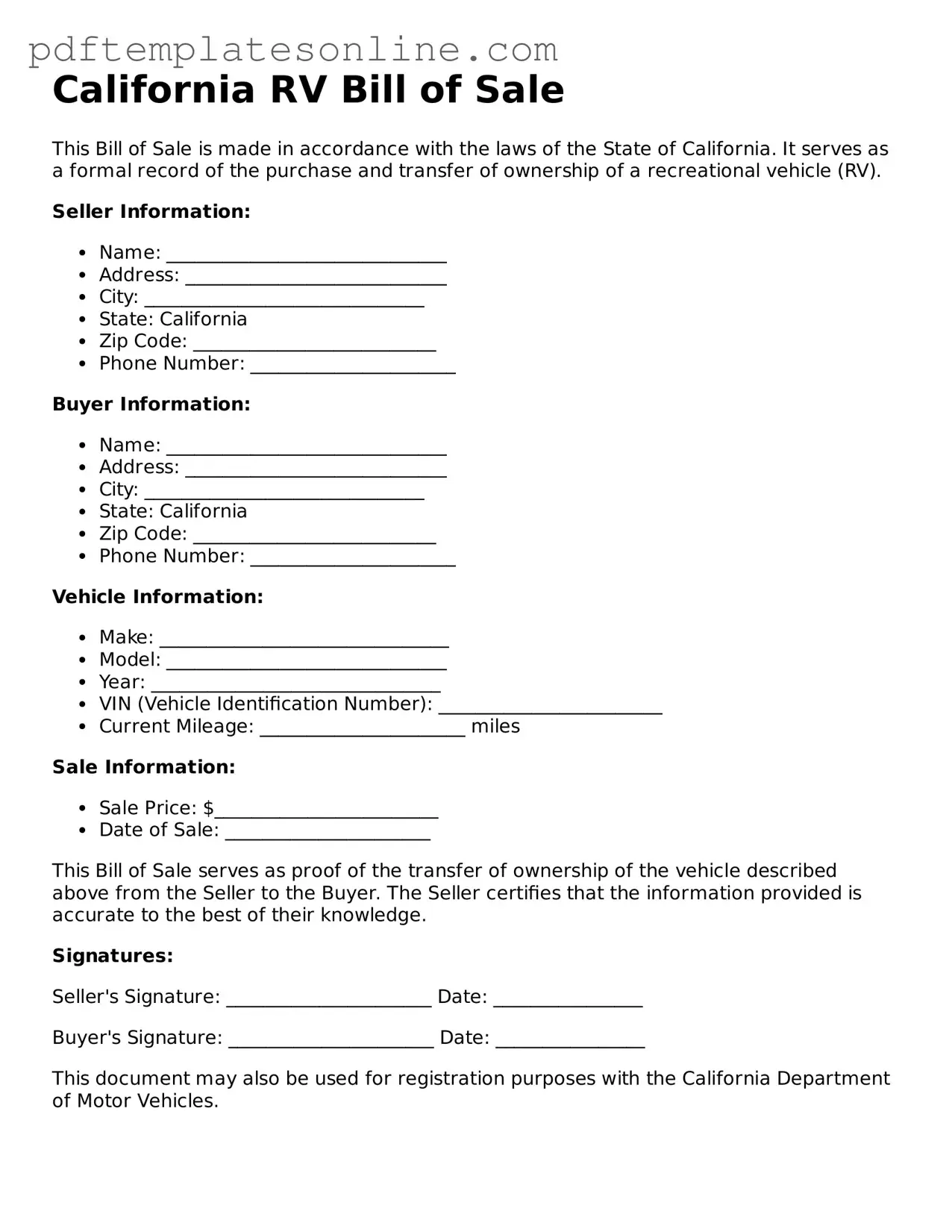Filling out the California RV Bill of Sale form can seem straightforward, but many people make common mistakes that can lead to complications down the line. One frequent error is omitting essential information. The form requires specific details about the RV, such as the Vehicle Identification Number (VIN), make, model, and year. If any of this information is missing or incorrect, it can create issues with registration or transfer of ownership.
Another mistake often made is failing to include the correct sale price. The sale price should reflect the actual amount paid for the RV. If the amount is too low or not aligned with the market value, it may raise red flags with the DMV. This can lead to delays in processing the sale or even potential legal complications if the transaction is questioned.
People also frequently neglect to have both the buyer and seller sign the form. A signature is crucial, as it signifies that both parties agree to the terms of the sale. Without signatures, the document may not be considered valid, and the transfer of ownership could be challenged. Always ensure that both parties are present to sign at the time of the sale.
Another common oversight is not providing a copy of the completed Bill of Sale to the buyer. After the transaction, the seller should give a copy to the buyer for their records. This serves as proof of the sale and can be important if any disputes arise later. Failing to do this can leave the buyer without essential documentation.
Lastly, many people forget to check for any outstanding liens on the RV before completing the sale. A lien indicates that there are still financial obligations tied to the vehicle. If the RV has a lien and the seller does not disclose it, the buyer may face unexpected issues, including the risk of repossession. Always verify the status of the RV to ensure a smooth transaction.
